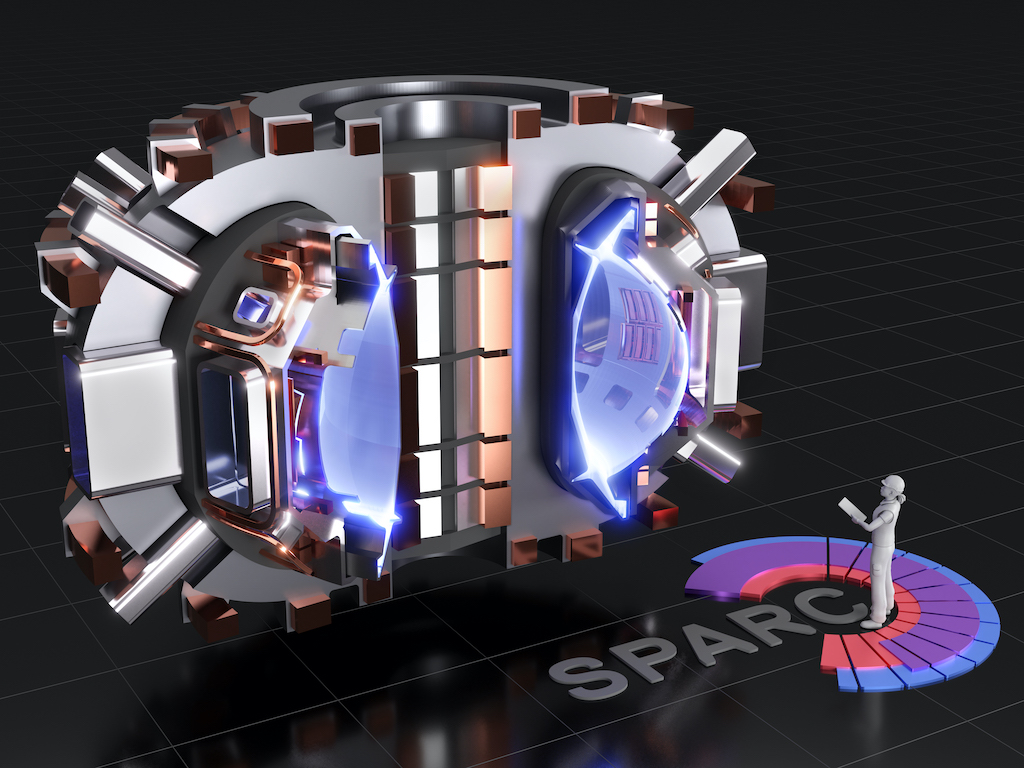3 Mins Read
We’re not far away from seeing the world’s first nuclear fusion reactor, according to the latest series of papers showcasing the progress that researchers have made. Called SPARC, the compact fusion reactor could be the precursor to a practical emissions-free power plant and holds enormous potential to facilitate the much-needed transition away from fossil fuels.
Two and a half years ago, researchers at the Massachusetts Institute of Technology (MIT) entered into an agreement with startup Commonwealth Fusion Systems (CFS) to develop what could be the world’s first emissions-free power plant. SPARC, the compact fusion reactor, has similar dimensions to mid-sized nuclear reactors of today, but scientists hope it can create energy the same way the sun does, making it a potential limitless, clean energy source for the planet.
In a set of seven scientific papers published in a special issue of the Journal of Plasma Physics, the researchers indicate that SPARC is fully on-track and is progressing smoothly. It provides the physics and empirical basis for the new fusion system that the group of 47 scientists hope to start building next year. No unexpected obstacles have appeared, and the remaining challenges the team faces seem to be manageable, according to Martin Greenwald, the deputy director of MIT’s Plasma Science and Fusion Center and one of the project’s lead scientists.
With the project timeline a decade faster than the world’s largest fusion power project (the 35-nation International Thermonuclear Experimental Reactor known as ITER), SPARC is set to become the world’s first experimental device to achieve “burning plasma”, a self-sustaining fusion reaction that forms helium without the need for any additional energy input.
What we’re trying to do is put the project on the firmest possible physics basis, so that we’re confident about how it’s going to perform, and then to provide guidance and answer questions for the engineering design as it proceeds.
Martin Greenwald, Deputy Director of MIT’s Plasma Science and Fusion Center, SPARC Scientist
It’s a huge step in the right direction towards creating an actual working prototype of a power plant that generates far fewer carbon emissions than the current fossil fuel industry – the single largest single source of global greenhouse gas emissions fuelling climate change, not to mention dangerous air pollution threatening the health of millions around the world.
“This work is a potential game-changer for the international fusion program,” said Chris Hegna, a professor of engineering physics at the University of Wisconsin at Madison, who was not a part of the MIT-CFS project.
Greenwald says a lot of work remains to be done and the coronavirus has posed some limitations to the speed of their project, but the results are all looking promising so far.
This work is a potential game-changer for the international fusion program.
Chris Hegna, Professor of Engineering Physics at the University of Wisconsin
“We’re still aiming for a start of construction in roughly June of 2021,” he explains. “The physics effort is well-integrated with the engineering design. What we’re trying to do is put the project on the firmest possible physics basis, so that we’re confident about how it’s going to perform, and then to provide guidance and answer questions for the engineering design as it proceeds.”
Once the machine is constructed and up and running, the team will be able to learn more about the physics of burning plasmas and other crucial components that will help expedite the possibility of commercial fusion devices powered by hydrogen isotopes deuterium and tritium fuel, which can be made in “virtually limitless supplies”.
Overall, the one message that Greenwald and the researchers have is that we’re not far away from making this clean energy source a reality in the near future. “We believe it’s going to work.”
Lead image courtesy of CFS / MIT-PSFC / CAD Rendering by T. Henderson.




